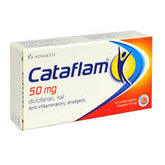featured Bronchiolitis
On by ZimSeller Pharmacy 0 comments
Bronchiectasis
On by ZimSeller Pharmacy 0 comments
Broken toe
On by ZimSeller Pharmacy 0 comments
Broken nose
On by ZimSeller Pharmacy 0 comments
Broken leg
On by ZimSeller Pharmacy 0 comments
Broken finger or thumb
On by ZimSeller Pharmacy 0 comments
Broken collarbone
On by ZimSeller Pharmacy 0 comments





















